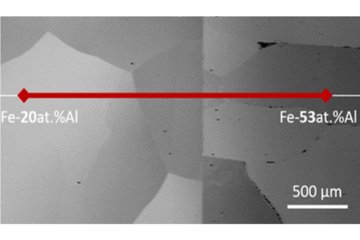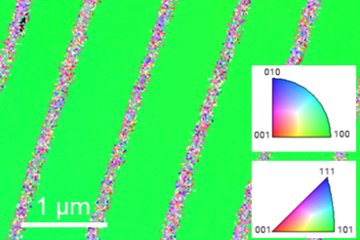All genres
21.
Talk
The role of water at electrified solid/liquid Interfaces under potential control. Materials Science, Engineering & Technology International Conference, Singapore, Singapore (2022)
22.
Talk
Insights into Electrified Solid/Liquid Interfaces from Ab initio and Atomistic Molecular Dynamics Simulations. 73th Annual Meeting of the International Society of Electrochemistry (Keynote talk), Online (2022)
23.
Talk
The role of water at electrified solid/liquid under potential control. Psi-k 2020 Conference, Lausanne, Switzerland (2022)
24.
Talk
Ab initio insights into processes at solid/liquid interfaces. Workshop on the "Fundamentals of the electrochemistry of the metal/electrolyte interface", London, UK (2022)
25.
Talk
Insights into processes at electrified solid/liquid interfaces from ab initio molecular dynamics simulations. CMWS Water in Energy Research and Technology workshop, DESY, Hamburg, Germany
, Online (2022)
26.
Talk
Processes at solid/liquid interfaces – insights from ab initio molecular dynamics simulations with potential control. AMaSiS 2021 Online - Applied Mathematics and Simulation for Semiconductors and Electrochemical Systems, Berlin, Germany (2021)
27.
Talk
Identifying and understanding corrosion reactions: An ab initio approach. ICASS - 4th International Conference on Applied Surface Science, Virtual Conference (2021)
28.
Talk
Insights into processes at electrochemical solid/liquid interfaces from ab initio molecular dynamics simulations. ICACES/BENCh Virtual Summer School 2021, Göttingen, Germany (2021)
29.
Talk
Insights into processes at electrochemical solid/liquid interfaces from ab initio molecular dynamics simulations. ICTP-Workshop on “Physics and Chemistry of Solid/Liquid Interfaces for Energy Conversion and Storage”, Virtual Meeting, Trieste, Italy (2021)
30.
Talk
Hydrogen at electrified solid/liquid interfaces – insights from ab initio molecular dynamics simulations. TYC mini-workshop on “Physics and Chemistry of Solid/Liquid Interfaces”, online, London, UK (2021)
31.
Talk
Design and application of an ab initio electrochemical cell. virtual DPG-Frühjahrstagung (DPG Spring Meeting) of the Surface Science Division, Berlin, Germany (2021)
32.
Talk
Insights into processes at electrochemical solid/liquid interfaces from ab initio molecular dynamics simulations. TMS 2021 Meeting, delivered online, Orlando, FL, USA (2021)
33.
Talk
Realistic description of processes at solid/liquid interfaces by ab initio molecular dynamics simulations with potential control. MRS 2021 Fall Meeting, Hybrid Conference, Boston, MA, USA (2021)
34.
Thesis - PhD
Development of an ab initio electrochemical cell: Understanding the dielectric properties of interfacial water and Mg dissolution from first principles. Dissertation, Philipps-Universität Marburg, Germany (2024)
35.
Preprint
Dielectric properties of nanoconfined water from ab initio thermopotentiostat molecular dynamics. arXiv (2022)











